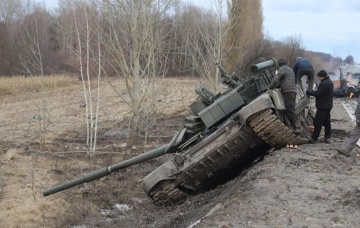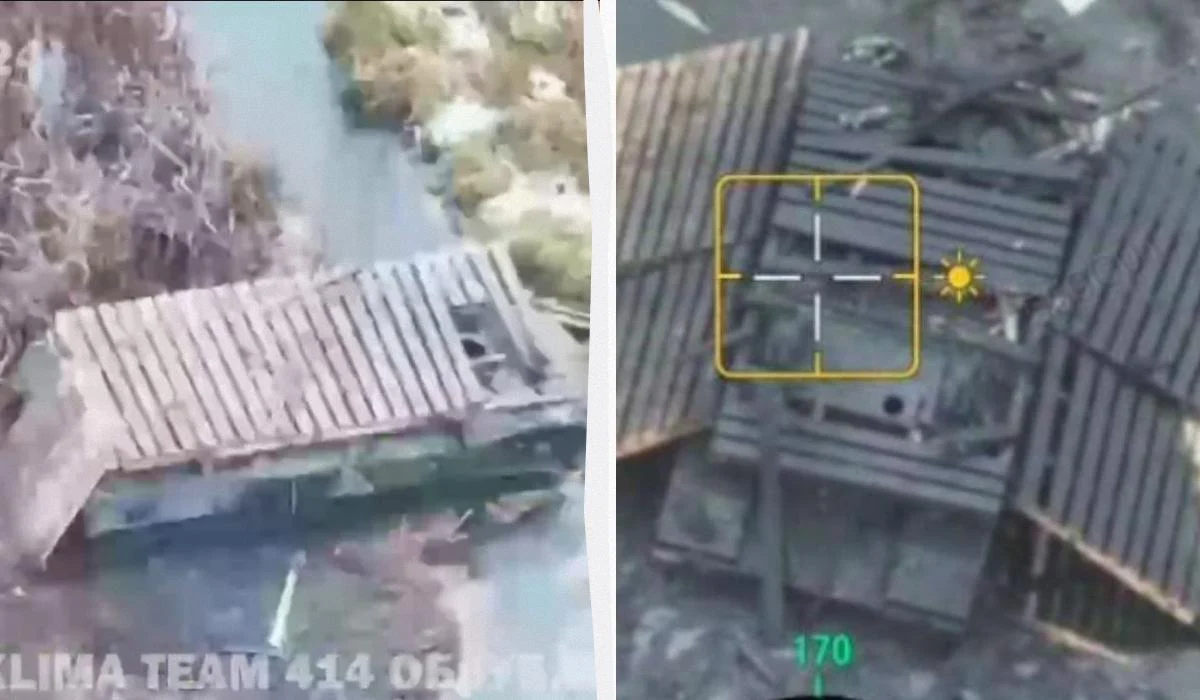Forbes: To Cross Rivers, Russia Reinvented World War II ‘Funny’ Tanks
6- 18.01.2025, 10:19
- 18,140

The Russians pile wooden planks on BTRs and roll them into a river.
Russia is using a long-forgotten WWII technology to cross rivers in the Kursk region.
Forbes observer David Axe writes that during World War II, some armies—the British Army, in particular—bolted metal spans to the top of tank chassis and used the resulting “funnies” to rapidly erect bridges across vehicle-halting gaps on the battlefield.
“Eighty years later in Kursk Oblast in western Russia, Russian airborne troops have been deploying modified BTR-D air assault vehicles in the same way: piling what appear to be wooden floors on top of the 13-ton tracked vehicles and rolling them into rivers. Sinking into the muddy riverbeds, the vehicles’ improvised surfaces function as bridges,” the analyst writes.

The funnies seem to be most active on the western edge of the Kursk salient, where Russian paratroopers have been counterattacking since November. To assault Ukrainian forces in and around the village of Darino, the Russian must first cross the Snahist River. The Ukrainians relentlessly bombard civilian bridges and any conventional or pontoon spans Russian engineers build in Kursk—and also target the Russians’ purpose-built bridging vehicles, which are big and unwieldy.
Hence the pivot to the BTR-D funnies. They’re as vulnerable to Ukrainian mines, missiles, artillery and drones as any combat vehicle—that is, very vulnerable—but they might be less vulnerable than permanent bridges or slow engineering vehicles. A BTR-D is thinly protected, but at least it’s fast, with a top road speed of nearly 40 miles per hour.
“The Ukrainians have knocked out at least two BTR-D funnies since November. But the do-it-yourself vehicles have helped Russian troops cross the Snahist River more than once and begin to contest the area around Darino,” David Axe writes.











